Sabudana Thalipeeth or Dosa is soft inside and crispy on the outside, made using tapioca pearls (sago), mashed potatoes, and some spices. These are popularly made during vrat, fasting, and upvas days like Navratri, Shivratri, Ekadashi, Sai guruvar, etc.
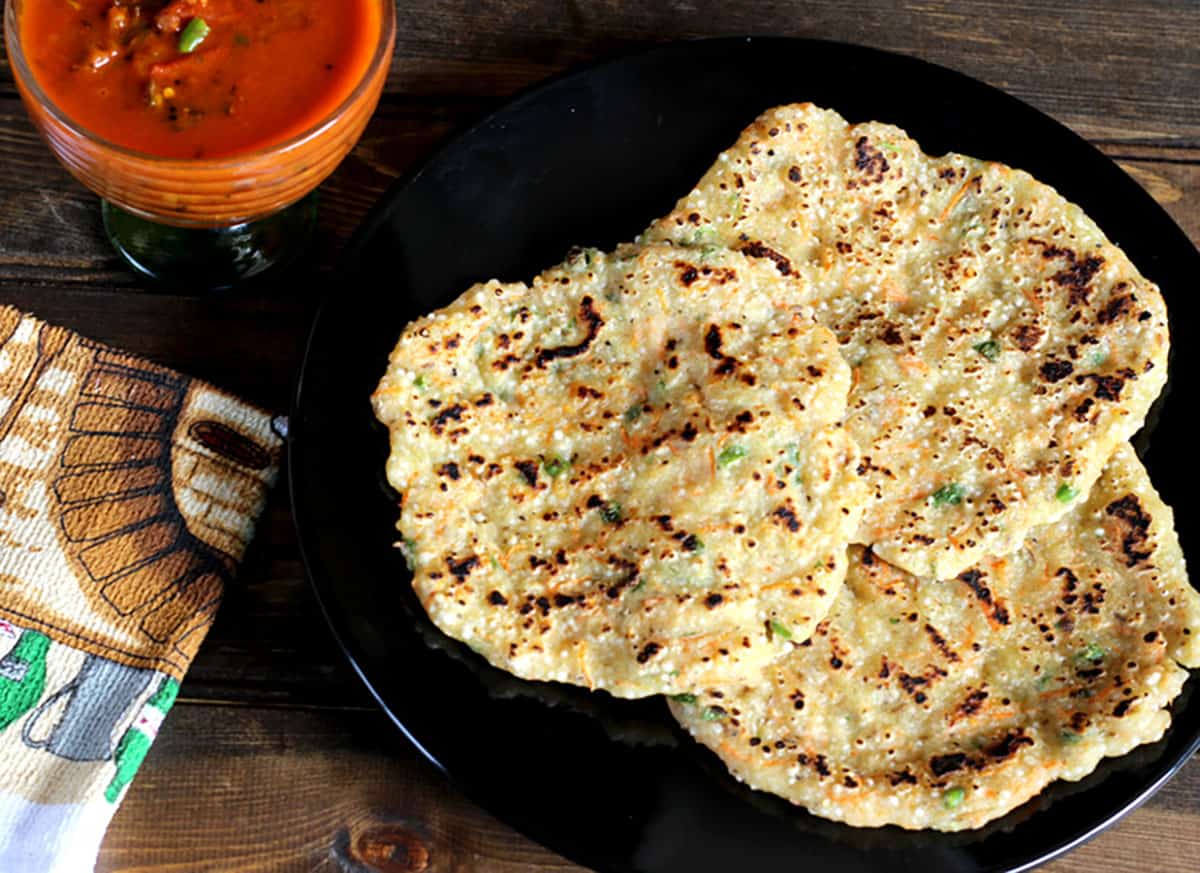
Jump to:
Recipe card
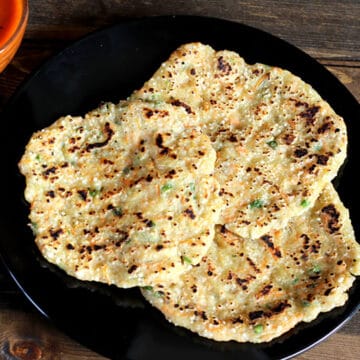
Sabudana Thalipeeth | Sabudana Dosa - Vrat, Upvas Recipe
Equipment
- Dosa tawa
Ingredients
- 1 cup Sabudana tapioca pearls or sabakki
- 2 Potatoes boiled, peeled and mashed
- 1 teaspoon Cumin seeds
- ¼ cup Peanuts roasted and crushed
- 2 to 3 Green chilies chopped
- 1 inch Ginger chopped or grated
- ¼ cup Coriander leaves
- 2 tablespoon Yogurt or use 1 teaspoon Lemon juice
- 1 teaspoon Sugar
- Salt to taste; use sendha namak for fasting
- 1 teaspoon Pepper powder
- 1 Carrot grated (optional)
- ¼ cup Singhare Ka atta optional
- Ghee oil for cooking thalipeeth
Instructions
Preparation
- Rinse the sabudana in runnig water. Soak in enough water for 4 hours or overnight until it becomes soft.1 cup Sabudana
- Drain the water completely. Make sure there is no water.
Making the dough
- To the soaked sabudana, add potatoes, cumin seeds, peanuts, green chilies, ginger, coriander leaves, yogurt, sugar, salt, pepper powder, and carrot.2 Potatoes, 1 teaspoon Cumin seeds, ¼ cup Peanuts, 2 to 3 Green chilies, 1 inch Ginger, ¼ cup Coriander leaves, 2 tablespoon Yogurt, 1 teaspoon Sugar, Salt, 1 teaspoon Pepper powder, 1 Carrot
- Mix well so that the spices are combined and a dough is formed. For binding, if needed, you can add singhare ka atta (or rice flour on non-fasting days) and splash some water.¼ cup Singhare Ka atta
How to cook thalipeeth (roti)?
- Heat a non-stick pan or a cast iron skillet on medium flame. Grease it with oil or ghee. Also, grease your fingers.Ghee
- Once the pan is hot, take a small portion of the dough and spread it evenly with your fingers or the back of the laddle for desired thickness. (You can use banana leaf, parchment paper, or butter paper to flatten. Check these pictures on making the ragi roti recipe)
- Cover it with a lid. Once it starts becoming golden brown, flip it and cook on the other side till it's roasted and golden brown. Drizzle oil or ghee as needed.
- Repeat the process for the remaining dough.
Notes
- Vary the amount of green chilies as per your taste.
- Flour is added only for binding. While preparing for fasting or vrat, use the flour you can eat on that day, like singhare ke atta (chestnut flour). Otherwise, you can add rice flour, maida.
- You can use lemon juice instead of yogurt to taste.
- You can skip ginger and add hing or asafoetida (hing) for taste.
- Don't want to spend time boiling and mashing potatoes? You can add 1 cup of sooji or semolina to make this thalipeeth.
- Make sure that the mashed potatoes you add are not hot. Otherwise, it will make sabudana starchy and sticky.
- The mixture will tear while spreading on the pan or parchment paper if it is very dry. In this case, sprinkle a little water.
- These rotis are one of the best recipes to try with leftover sabudana vada dough.
Nutrition
Upvas sabudana thalipeeth (dosa)
Because this is traditionally prepared during vrat and fasting days, it is also called upvasache thalipeeth in Marathi. It is similar to making akki roti and ragi roti and is also called sabudana roti.
Sometimes, store-bought tapioca pearls (sago) do not work well for making sabudana khichdi, as they become mushy and difficult to handle. Instead of throwing them away, I prepare these sabudana dosas. Even after keeping it at room temperature for a couple of hours, this dosa remains soft and tastes good.
If you have leftover sabudana vada dough or you want something other than a deep-fried snack, make this sabudana thalipeeth or sabudana appe (paniyaram).
Check out more interesting fasting, upvas, and vrat recipes or farali navratri recipes.
Ingredients
Sabudana: Also avaialble as sago, sabakki or tapioca pearls in any Asian stores.
Potatoes: for binding.
Other ingredients: chilies, ginger, coriander leaves, yogurt, sugar, salt for flavor. Adjust accordingly.
Check out the recipe card for the full list of the ingredients.
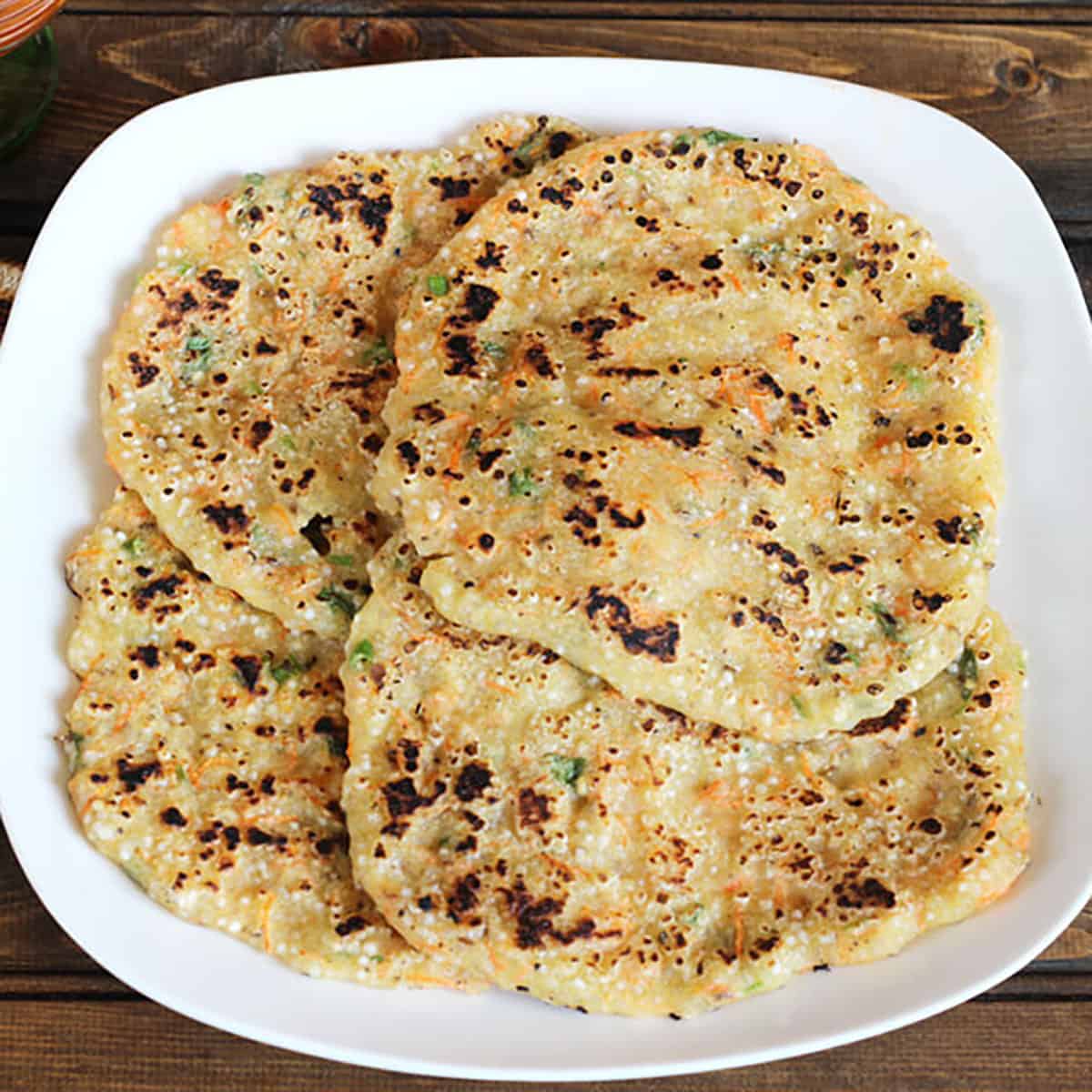
Step-by-step instructions
Preparation
- Rinse the sabudana in runnig water. Soak in enough water for 4 hours or overnight until it becomes soft.
- Drain the water completely. Make sure there is no water.
Making the dough
- To the soaked sabudana, add potatoes, cumin seeds, peanuts, green chilies, ginger, coriander leaves, yogurt, sugar, salt, pepper powder, and carrot.
- Mix well so that the spices are combined and a dough is formed. For binding, if needed, you can add singhare ka atta (or rice flour on non-fasting days) and splash some water.
How to cook thalipeeth (roti)?
- Heat a non-stick pan or a cast iron skillet on medium flame. Grease it with oil or ghee. Also, grease your fingers.
- Once the pan is hot, take a small portion of the dough and spread it evenly with your fingers or the back of the laddle for desired thickness. (You can use banana leaf, parchment paper, or butter paper to flatten. Check these pictures on making the ragi roti recipe)
- Cover it with a lid. Once it starts becoming golden brown, flip it and cook on the other side till it's roasted and golden brown. Drizzle oil or ghee as needed.
- Repeat the process for the remaining dough.
Serving suggestions
Serve it with aloo rasedar, tomato curry without onion and garlic, or any spicy chutney, vrat ke dahi aloo, vrat wale paneer curry, simple dates tamarind chutney, etc.
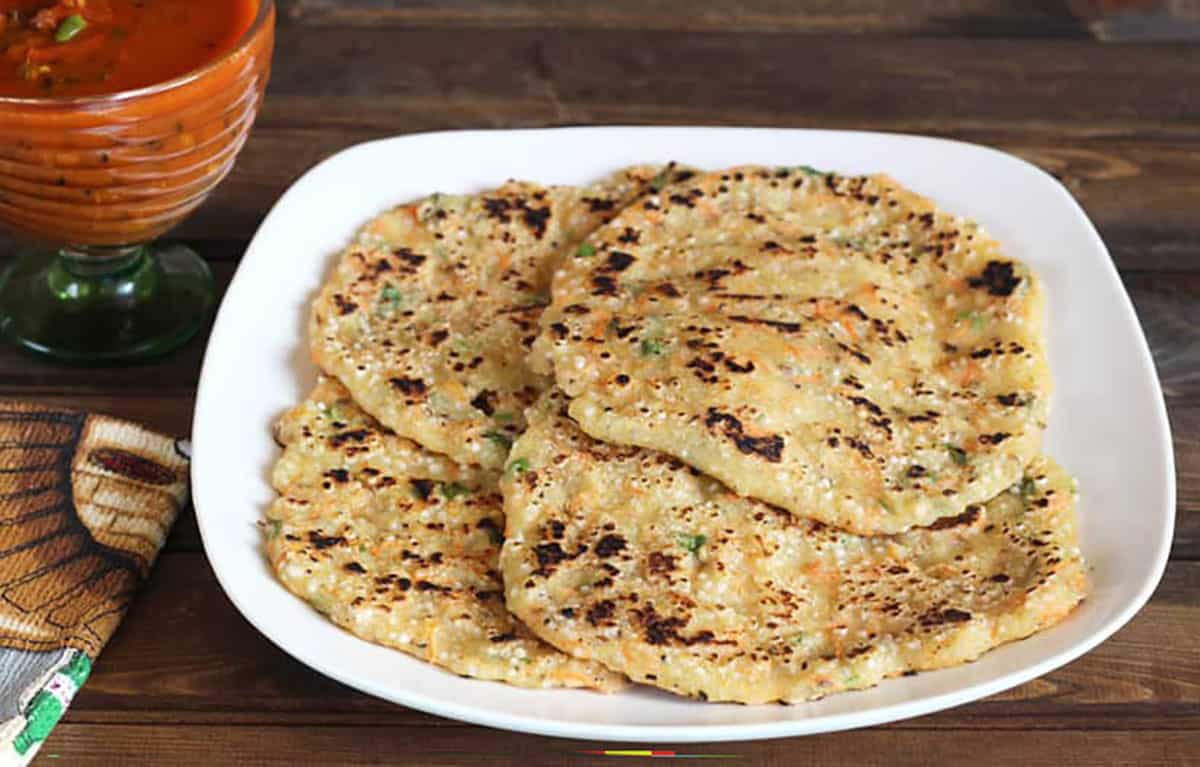
Tips
- Vary the amount of green chilies as per your taste.
- Flour is added only for binding. While preparing for fasting or vrat, use the flour you can eat on that day, like singhare ke atta (chestnut flour). Otherwise, you can add rice flour, maida.
- You can use lemon juice instead of yogurt to taste.
- You can skip ginger and add hing or asafoetida (hing) for taste.
- Don't want to spend time boiling and mashing potatoes? You can add 1 cup of sooji or semolina to make this thalipeeth.
- Make sure that the mashed potatoes you add are not hot. Otherwise, it will make sabudana starchy and sticky.
- The mixture will tear while spreading on the pan or parchment paper if it is very dry. In this case, sprinkle a little water.
- These rotis are one of the best recipes to try with leftover sabudana vada dough.
More sabudana recipes
Check our list of classic and easy-to-make sabudana recipes for fasting, vrat, and upvas during navratri, shivratri, ram navami, ekadashi, sai guruvar, varamahalakshmi vratam, etc.
Did you like this recipe? Please leave a star ⭐️⭐️⭐️⭐️⭐️ rating below and/or a review in the comments section. You can also stay in touch with us through social media by following us on Pinterest, Facebook, Instagram, and Twitter.
Note: We originally posted this sabudana dosa or upvasache thalipeeth in Jan 2016. It has now been modified in Feb 2024 with Expert Chef Tips, FAQs, Storage Instructions, etc.

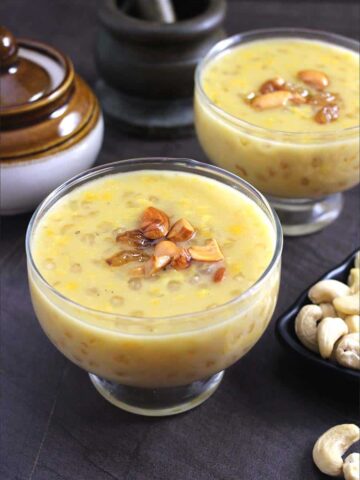
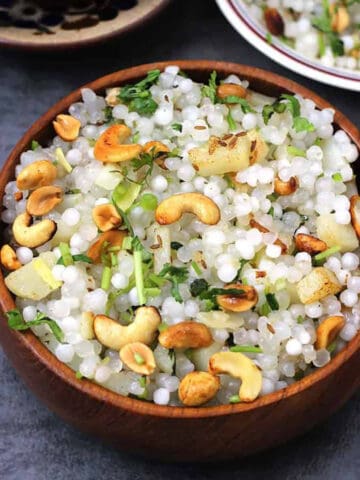


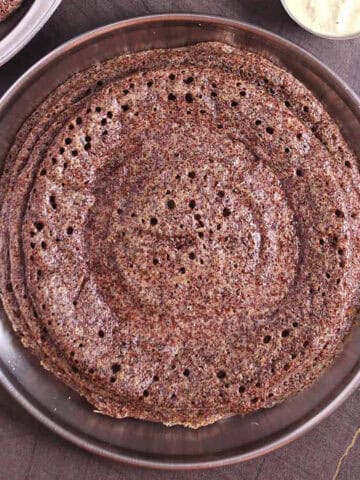
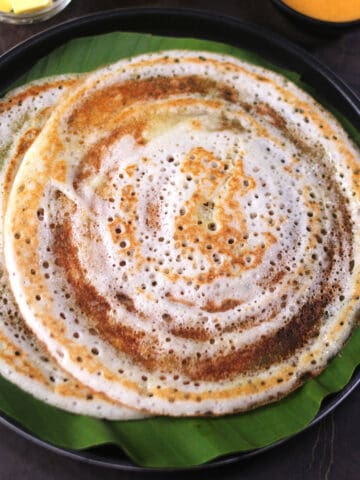
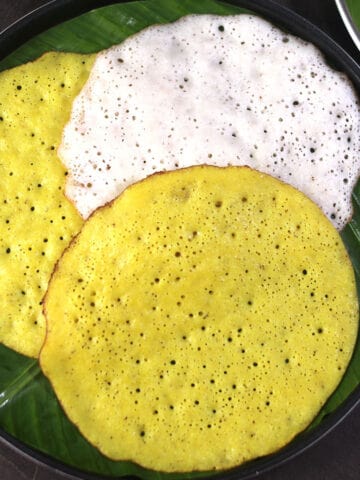
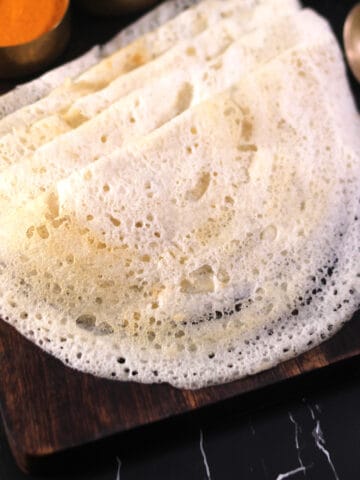
beena
Very new to me. Looks so yummy
Kushi
Thank you Beena 🙂
Kushi
Thank you for the comment. I have changed the same. Some article that I read say it's GF and some don't 🙂
Rubysk
I will try this very soon.
Awesome recipes
Kushi
Thank you 😉